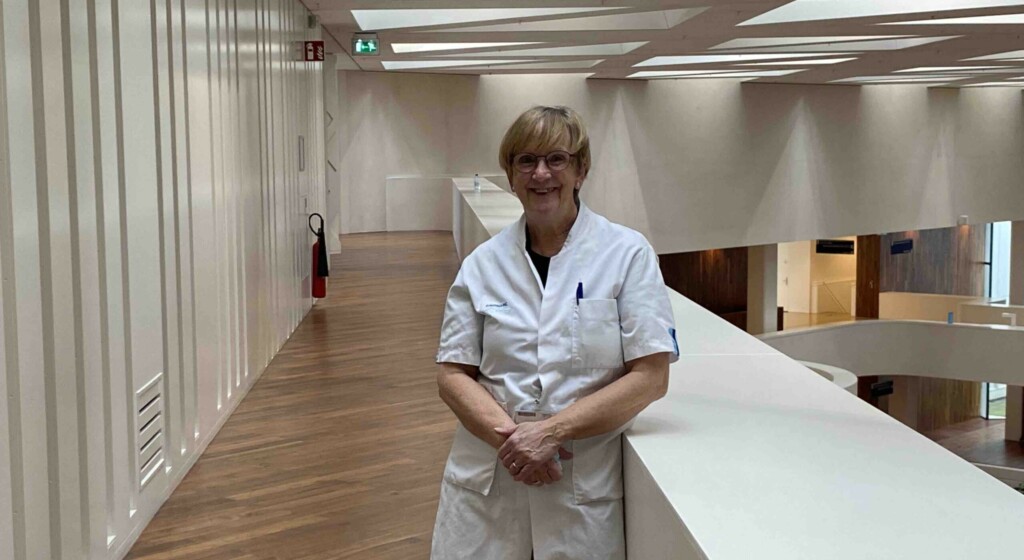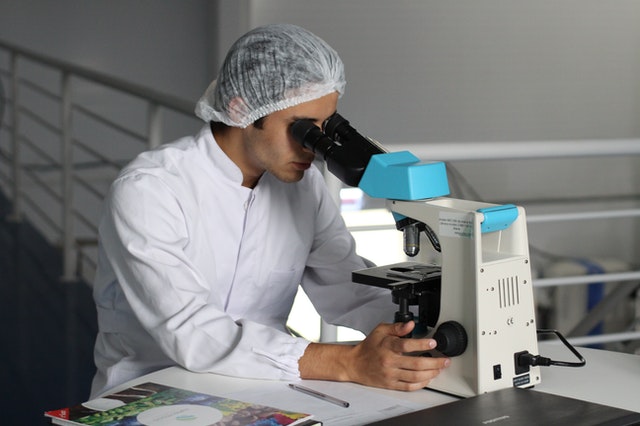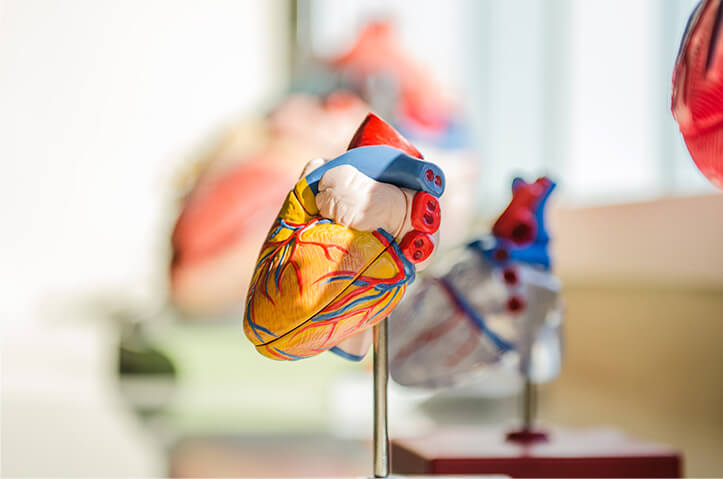
Ablation for Afib
Last update February 1, 2024
Treating atrial fibrillation with an ablation
In patients with atrial fibrillation, the electrical impulses of the heart atrium are irregular. Ablation focuses on disrupting those disordered stimuli. By destroying heart muscle tissue in very specific locations, abnormal stimuli can no longer arise from that specific tissue. This ultimately prevents cardiac arrhythmias from occurring. What do the treatments look like and what options are there?
This is what we know about ablation therapy so far:
- A catheter ablation can be a successful treatment for atrial fibrillation, but this does not apply to every patient.
- Multiple ablation treatments are sometimes needed to stop atrial fibrillation.
- An ablation can be performed using different techniques, each with its advantages and disadvantages.
- Ablation can often work more effectively than medication (see study 1 and study 2 ).
What is ablation and how does it work?
During an ablation, the electrophysiologist purposefully damages parts of the atrium to isolate electrical stimuli from the rest of the heart. He or she does this by, for example, ablating a circle around the area. Heart muscle tissue is destroyed by making it very cold or very hot to the extent that the abnormal tissue is destroyed. After a few months, the ablated spots form scar tissue. This tissue does not allow stimuli to pass through so cardiac arrhythmias show longer in the treated area. During the treatment, you are often able to be fully conscious.
Different types of ablation
1. Catheter Ablation
During catheter ablation, thin and flexible tubes are inserted through your groin area to run along the major blood vessels to your heart. This is performed under local anesthesia. The electrophysiologist inserts the catheters through the blood vessel into the right atrium of your heart. With echocardiography and X-ray images, the catheters can be guided precisely through the septum from the right atrium to the left atrium.
The electrical conduction is then mapped by measuring the electrical signals at several locations in the atria. Based on these results, certain areas in the heart muscle tissue that show disordered activity are then destroyed by heating (radiofrequency ablation) or freezing (cryo-ablation).
2. PVI (Pulmonary Vein Ablation)
The catheter ablation most often used for atrial fibrillation is called ‘pulmonary vein isolation’. During the treatment, 4 pulmonary veins that drain into the left atrium are isolated by making a circular scar around each vein. What is the result? Electrical signals that originate in the pulmonary veins can no longer reach the left atrium. This should be able to completely put an end to your atrial fibrillation.
3. Radiofrequency catheter ablation
In this form of ablation, radiofrequency current heats the heart muscle tissue, causing it to become damaged and the electrical impulses to stop. With this treatment, it is also possible to create scars around the back of the left atrium. This is called a box lesion, also called mini-MAZE. In some patients, this is necessary to stop atrial fibrillation.
4. VATS PVI or Mini MAZE
With this treatment you undergo PVI isolation but through a keyhole surgery (laparoscopy). During this, you are under general anesthesia. The surgeon makes small incisions on both sides of your chest to access the heart. After this, a box lesion, mentioned above, is created with radiofrequency ablation. In addition, the left atrial appendage is often removed preventively or closed with a clip during this treatment. The atrial appendage does not have an important function, but it does increase the risk of developing blood clots. Therefore, removal can be useful.
5. Cryo-thermal ablation
During cryo-thermal ablation, temperatures as low as -50 °C are used on the heart tissue. The electrophysiologist places a balloon catheter against the entrance to the pulmonary vein. When the pulmonary vein is occluded, the balloon is frozen, destroying heart muscle tissue near the balloon.
6. Pulsed field ablation
This ablation uses an electric field to create small scars in the heart tissue where the arrhythmia originates. This blocks the stimuli that cause the arrhythmia. This is done utilizing a catheter inserted into the heart, which locally delivers short but strong electrical shocks. These short shocks only treat the heart muscle cells around the catheter. This prevents nerve cells and other tissue from being damaged, which reduces the risk of complications.
7. His bundle ablation
Do all the aforementioned ablations not work and do medications have little effect? Then ablation of the bundle of His can help. The His is the connection between the atria and the ventricles of your heart. This treatment completely burns through the bundle of His. As a result, your irregular heart rhythm can no longer continue to the heart ventricles. After the treatment, the contraction of the ventricles can be very slow. A pacemaker is therefore implanted a few weeks before the ablation, which takes over the rhythm of your heart after the procedure.
8. Hybrid ablation
With hybrid ablation, the electrophysiologist works together with a surgeon. The surgeon ablates lines on the outside of the heart, around the pulmonary veins, where scar tissue eventually forms. Meanwhile, the electrophysiologist measures electrical signals on the inside and outside of the heart. He or she determines whether the procedure is working. If the measurements show that not all of the disordered stimuli have disappeared, the electrophysiologist ablates extra lines on the inside of the heart.
9. Modified maze procedure
With this treatment, a pulmonary vein is isolated during heart surgery. Furthermore, the treating surgeon may also ablate lines in areas of the atrium that may also play a role in the development of atrial fibrillation. This procedure is often performed in patients undergoing open heart surgery for other reasons. For example, due to the narrowing of the coronary arteries.
Is ablation safe and what are the complications
An ablation is always associated with several risks. Fortunately, the chance of these risks is small. These are the most common complications:
- Bleeding in the groin
- Cardiac tamponade, which is a hole in the wall of the heart through which blood can leak into the pericardium
- Blood clot formation that can cause a cerebral infarction
- Lung problems due to narrowing of the pulmonary veins
- An open connection between the atrium of the heart and the esophagus
- An allergic reaction to, for example, the plasters or the disinfectant used
Ablation Recovery
During an ablation, the heart tissue is intentionally damaged. Therefore, after the treatment, there will be a recovery period during which the cells recover. After the treatments, patients usually will stay in the hospital for about 2 days to recuperate. Have you previously had any other procedures besides an ablation? Then you may have to stay longer. Once you get home your recovery period starts.
How do you recover from ablation as best as possible?
- Avoid strenuous exercise and sports during the first 3 days after treatment, after which you can slowly start increasing exercise intensity
- Choose gentle exercises such as walking, cycling or yoga
- Eat healthy (lots of fruit and vegetables, little starch and fat)
- Get enough sleep
- Avoid stress, smoking, and alcohol
During the recovery period, your heart rhythm may still be somewhat irregular.
Check-ups after an ablation
After an ablation, you will have to come back for regular check-ups. Check-ups take place 3, 6, and 12 months after treatment. Up until your first check-up, you will be taking medication (such as antiarrhythmics) and blood thinners. This is important because many patients still suffer from cardiac arrhythmias during the first months after the procedure.
During your check-ups, your doctor will perform a continuous heart rhythm recording and an ECG. Is everything recovering well? Then you can reduce your medication dose.
What If an Ablation Does Not Help?
If atrial fibrillation does return, there are several options:
- An additional ablation to re-damage the repaired heart tissue
- Adjusting medication
- An electrical cardioversion
References
- Mark, D. B., Anstrom, K. J., Sheng, S., Piccini, J. P., Baloch, K., Monahan, K. H., … & Packer, D. L. (2019). Effect of catheter ablation vs medical therapy on quality of life among patients with atrial fibrillation. Jama, 321(13), 1275. https://doi.org/10.1001/jama.2019.0692
- Packer, D. L., Piccini, J. P., Monahan, K. H., Al‐Khalidi, H. R., Silverstein, A., Noseworthy, P. A., … & Mark, D. B. (2021). Ablation versus drug therapy for atrial fibrillation in heart failure. Circulation, 143(14), 1377-1390. https://doi.org/10.1161/circulationaha.120.050991
Share this article














